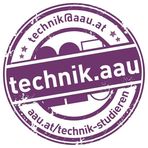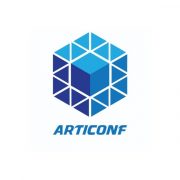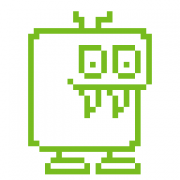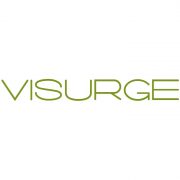 VCIP 2025VCIP 01.-04. Dezember 2025
VCIP 2025VCIP 01.-04. Dezember 2025
 University Klagenfurt - YoutubeAlpen-Adria-Universität Klagenfurt
University Klagenfurt - YoutubeAlpen-Adria-Universität Klagenfurt
 University Klagenfurt - TwitterAlpen-Adria-Universität Klagenfurt
University Klagenfurt - TwitterAlpen-Adria-Universität Klagenfurt
 University Klagenfurt - FacebookAlpen-Adria-Universität Klagenfurt
University Klagenfurt - FacebookAlpen-Adria-Universität Klagenfurt
 TeWi - YoutubeFaculty of Technical Sciences
TeWi - YoutubeFaculty of Technical Sciences
 TeWi - TwitterFaculty of Technical Sciences
TeWi - TwitterFaculty of Technical Sciences
 TeWi - Facebook
TeWi - FacebookFaculty of Technical Sciences University Klagenfurt
 ITEC - TwitterDepartment of Information Technology
ITEC - TwitterDepartment of Information Technology
Distributed and Parallel Systems (DPS), Multimedia Communication (MMC), Multimedia Information Systems (MIS)
 FTF Förderverein - TwitterFörderverein Technische Fakultät an der Universität Klagenfurt
FTF Förderverein - TwitterFörderverein Technische Fakultät an der Universität Klagenfurt
 ADAPT - TwitterProject ADAPT
ADAPT - TwitterProject ADAPT
 ATHENA - YoutubeProject ATHENA
ATHENA - YoutubeProject ATHENA
 ARTICONF - YoutubeProject ARTICONF
ARTICONF - YoutubeProject ARTICONF
 ARTICONF - TwitterProject ARTICONF
ARTICONF - TwitterProject ARTICONF
 Game Jam - YoutubeGame Jam & more
Game Jam - YoutubeGame Jam & more
 VisurgeWith our profound experience in this field we develop within our research work creative, customised and practical solutions to achieve sustained success for physicians and, subsequently, hospitals.
VisurgeWith our profound experience in this field we develop within our research work creative, customised and practical solutions to achieve sustained success for physicians and, subsequently, hospitals.
 NDN TestbedWhile the Internet has far exceeded expectations, it has also stretched initial assumptions, often creating tussles that challenge its underlying communication model. Users and applications operate in terms of content, making it increasingly limiting and difficult to conform to IP’s requirement to communicate by discovering and specifying location. To carry the Internet into the future, a conceptually simple yet transformational architectural shift is required, from today’s focus on where — addresses and hosts — to what — the content that users and applications care about.
NDN TestbedWhile the Internet has far exceeded expectations, it has also stretched initial assumptions, often creating tussles that challenge its underlying communication model. Users and applications operate in terms of content, making it increasingly limiting and difficult to conform to IP’s requirement to communicate by discovering and specifying location. To carry the Internet into the future, a conceptually simple yet transformational architectural shift is required, from today’s focus on where — addresses and hosts — to what — the content that users and applications care about. ITEC – Dynamic Adaptive Streaming over HTTPUniversal media access as proposed in the late 90s, early 2000 is now reality. Thus, we can generate, distribute, share, and consume any media content, anywhere, anytime, and with/on any device. A major technical breakthrough was the adaptive streaming over HTTP resulting in the standardization of MPEG-DASH, which is now successfully deployed in HTML5 environments thanks to corresponding media source extensions (MSE). The next big thing in adaptive media streaming is virtual reality applications and, specifically, omnidirectional (360°) media streaming, which is currently built on top of the existing adaptive streaming ecosystems. This tutorial provides a detailed overview of adaptive streaming of both traditional and omnidirectional media within HTML5 environments. The tutorial focuses on the basic principles and paradigms for adaptive streaming – both traditional and omnidirectional media – as well as on already deployed content generation, distribution, and consumption workflows. Additionally, the tutorial provides insights into standards and emerging technologies in the adaptive streaming space. Finally, the tutorial includes the latest approaches for immersive media streaming enabling 6DoF DASH through Point Cloud Compression (PCC) and concludes with open research issues and industry efforts in this domain.
ITEC – Dynamic Adaptive Streaming over HTTPUniversal media access as proposed in the late 90s, early 2000 is now reality. Thus, we can generate, distribute, share, and consume any media content, anywhere, anytime, and with/on any device. A major technical breakthrough was the adaptive streaming over HTTP resulting in the standardization of MPEG-DASH, which is now successfully deployed in HTML5 environments thanks to corresponding media source extensions (MSE). The next big thing in adaptive media streaming is virtual reality applications and, specifically, omnidirectional (360°) media streaming, which is currently built on top of the existing adaptive streaming ecosystems. This tutorial provides a detailed overview of adaptive streaming of both traditional and omnidirectional media within HTML5 environments. The tutorial focuses on the basic principles and paradigms for adaptive streaming – both traditional and omnidirectional media – as well as on already deployed content generation, distribution, and consumption workflows. Additionally, the tutorial provides insights into standards and emerging technologies in the adaptive streaming space. Finally, the tutorial includes the latest approaches for immersive media streaming enabling 6DoF DASH through Point Cloud Compression (PCC) and concludes with open research issues and industry efforts in this domain.
 DASH Industry ForumIn April 2012, ISO, the international standards body which had already given us the core media foundations of MPEG-2, MP3 and MP4, finally ratified the version of its next generation adaptive streaming standard: MPEG-DASH. In an industry besieged by three comparable (but incompatible) segmented formats many asked – why another? The participating companies in the MPEG-DASH standardization (including Microsoft, Apple, Netflix, Qualcomm, Ericsson, Samsung, and many others) saw a vision of interoperability and convergence required for large-scale market growth that trumped the proprietary and competing solutions. They replaced multiple corporation-controlled solutions with a single industry-defined open standard.
DASH Industry ForumIn April 2012, ISO, the international standards body which had already given us the core media foundations of MPEG-2, MP3 and MP4, finally ratified the version of its next generation adaptive streaming standard: MPEG-DASH. In an industry besieged by three comparable (but incompatible) segmented formats many asked – why another? The participating companies in the MPEG-DASH standardization (including Microsoft, Apple, Netflix, Qualcomm, Ericsson, Samsung, and many others) saw a vision of interoperability and convergence required for large-scale market growth that trumped the proprietary and competing solutions. They replaced multiple corporation-controlled solutions with a single industry-defined open standard.
 MPEGThe Moving Picture Experts Group (MPEG) is a working group of ISO/IEC in charge of the development of international standards for compression, decompression, processing, and coded representation of moving pictures, audio and their combination.
MPEGThe Moving Picture Experts Group (MPEG) is a working group of ISO/IEC in charge of the development of international standards for compression, decompression, processing, and coded representation of moving pictures, audio and their combination.
 Sensory Experience LabThe Sensory Experience Lab (SELab) comprises a small team of experts working in the field of Quality of Multimedia Experience (QoMEx) with the focus on Sensory Experience.
Sensory Experience LabThe Sensory Experience Lab (SELab) comprises a small team of experts working in the field of Quality of Multimedia Experience (QoMEx) with the focus on Sensory Experience.
 Austrian Standards InternationalITEC participates in and contributes to ISO/IEC MPEG (and SC29) through Austrian Standards International for more than 20 years. ITEC’s main contributions are in the area of MPEG-21 (i.e., Digital Item Adaptation; also in related MPEG-7 aspects), MPEG-M (Multimedia Service Platform Technologies), MPEG-V (i.e., Sensory Information), MPEG-DASH, and MPEG-I. ITEC also hosted three MPEG meetings in Austria (2x in Klagenfurt, 1x in Vienna) which brings together more than 400 experts from around to world to discuss international standards for compression, decompression, processing, and coded representation of moving pictures, audio, and their combination.
Austrian Standards InternationalITEC participates in and contributes to ISO/IEC MPEG (and SC29) through Austrian Standards International for more than 20 years. ITEC’s main contributions are in the area of MPEG-21 (i.e., Digital Item Adaptation; also in related MPEG-7 aspects), MPEG-M (Multimedia Service Platform Technologies), MPEG-V (i.e., Sensory Information), MPEG-DASH, and MPEG-I. ITEC also hosted three MPEG meetings in Austria (2x in Klagenfurt, 1x in Vienna) which brings together more than 400 experts from around to world to discuss international standards for compression, decompression, processing, and coded representation of moving pictures, audio, and their combination.
